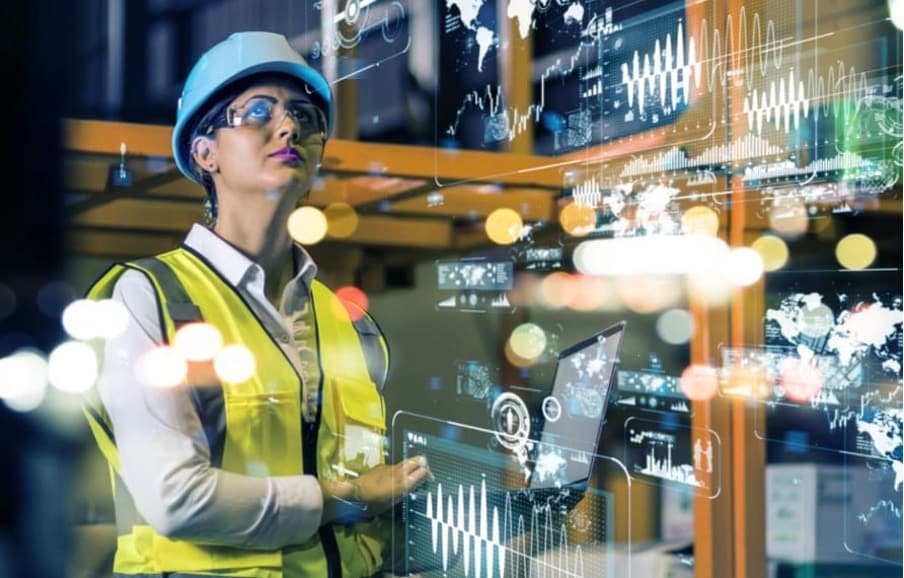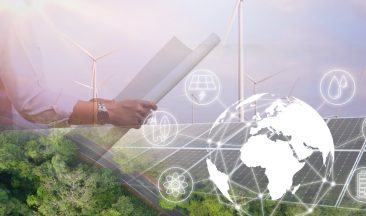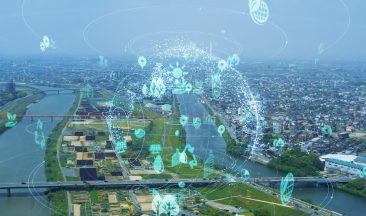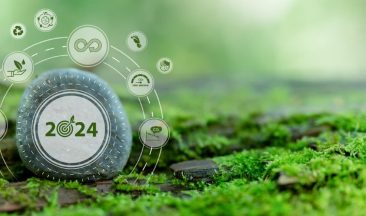We are indeed living the dream. Everyday tasks, processes, and communications have been transformed in a way only science fiction could have imagined.
The term Fourth Industrial Revolution was famously used by the founder and executive chairman of the Geneva-based WEF Klaus Schwab, who published a book in 2016 titled “The Fourth Industrial Revolution” and later used the term at Davos that year.
The lines between the physical, digital, and biological spheres are being blurred by these innovations. This is the fourth time it has occurred. This time it’s being driven by digital innovation and transformation.
Jumping a few dozen years ahead, to the 19th century, the machines in your factory are now operated by electricity rather than steam. You are the owner of a production line, with work stations in which every worker is responsible for one particular action. At the end of the line you get a finished product. Your factory can now mass produce. The technological resources of the period, named the Second Industrial Revolution or the Technological Revolution, allow for an easier distribution around the world.
What Came Before This?
The First Industrial Revolution between 1760 and 1840 was marked by a transition from manual production methods in individual workshops by craftsmen to machines using steam and waterpower. This revolutionized the production of textiles, iron manufacture, agriculture, and mining operations.
Next up was the Second Industrial Revolution between 1871 and 1914 brought about by the introduction of electricity and extensive railroad and telegraph networks. Ideas were disseminated more quickly while electrification facilitated the introduction of the modern packaging line.
The Third Industrial Revolution began with the Z1 computer of the early 1940s which literally weighed a ton and had 20,000 parts laid the foundation for analog computers which were replaced by their digital cousins in the 1950s.
When computers were introduced in Industry 3.0, it was disruptive thanks to the addition of an entirely new technology largely due to semiconductors, personal computers, and the internet which revolutionized industrial production and much of everyday life.
So what is Industry 4.0? The Fourth Industrial Revolution, also known as Industrial Revolution 4.0 focuses on how the “physical world is being transformed into a digital one” explains Itay Negrin, VP of Innovation, at ICL’s Global Operational Excellence and Innovation unit. “
In a nutshell, Industry 4.0 is the ongoing automation of traditional manufacturing and industrial practices, by using smart technology and devices, integrated for better communication and self-monitoring, automation, and the creation of smart machines which can analyze and diagnose issues without human intervention. Examples of industry 4.0 include Big Data, Artificial Intelligence (AI), Augmented Reality, Virtual Reality, and Machine Learning among others.
What is the difference between IoT and Industry 4.0?
The difference between IoT and Industry 4.0 is that The Internet of Things (IoT) refers to sensor data, machine communications, and automation systems and is more specific than the broad term Industry 4.0, which encompasses the entire digital change of the industry. Think of these concepts in a hierarchy format. IoT is one of the technologies used in emerging Industry 4.0 technologies.
Top technologies behind Industry 4.0
Not everyone needs to be a data scientist, but everyone needs to be data literate. So, what do some of this jargon mean?
Industry 4.0 examples include:
IoT
The Internet of Things (IoT) is an interconnected network of physical objects— “things”—embedded with sensors, software, and other technologies so that they can exchange data with each other and systems using the internet.
Big Data
Put simply, big data consists of very large, complex data sets but it’s of no use until that value is discovered to produce more efficiency and develop new products.
Artificial Intelligence (AI)
AI is the science and engineering of making intelligent machines and computer software understand human intelligence. It is a system that is aware of its environment and performs actions that maximize its chance of achieving its goals
Machine Learning
Machine learning is a branch of AI that uses data analysis to automate analytical model building so that systems can learn from data, identify patterns, and make decisions with minimal human intervention.
Augmented Reality and Virtual Reality (AR and VR)
AR or Augmented reality is merely adding to the user’s real-life experience. It transforms the ordinary world into a colorful, visual one by projecting virtual pictures and characters through glasses, a phone’s camera, or video.
VR takes these same components to another level by computer-generating a simulation of an alternate world, creating any visual or imaginable place for the user with special equipment like computers, sensors, headsets, and gloves.
You may also be interested in:
How Vehicles of the Future Are Made Safer
The Dark Matter Riddle: Scientists Hope for a Breakthrough
Autonomous Robots
Autonomous robots or Autobot are robots used in spaceflight, warehousing operations, household maintenance (such as cleaning), wastewater treatment, and delivering goods and services and perform behaviors or tasks with a high degree of autonomy and are usually considered to be part of the field of artificial intelligence, robotics, and information engineering.
These robots need to be able to cope with their physical environment on land, underwater, in the air, underground, or in space.
How Industry 4.0 Is Changing Manufacturing
Industry 4.0 offers the opportunity for manufacturers to optimize their operations quickly and efficiently by knowing what needs attention.
ICL’s Industry 4.0 innovation team is connecting the digital and physical world using the latest cutting-edge technology. With ICL’s industry know-how accumulated over decades, together with an unparalleled R&D infrastructure, we are implementing the latest technology to create innovative products in a safer, more environmentally friendly, and cost-effective way.
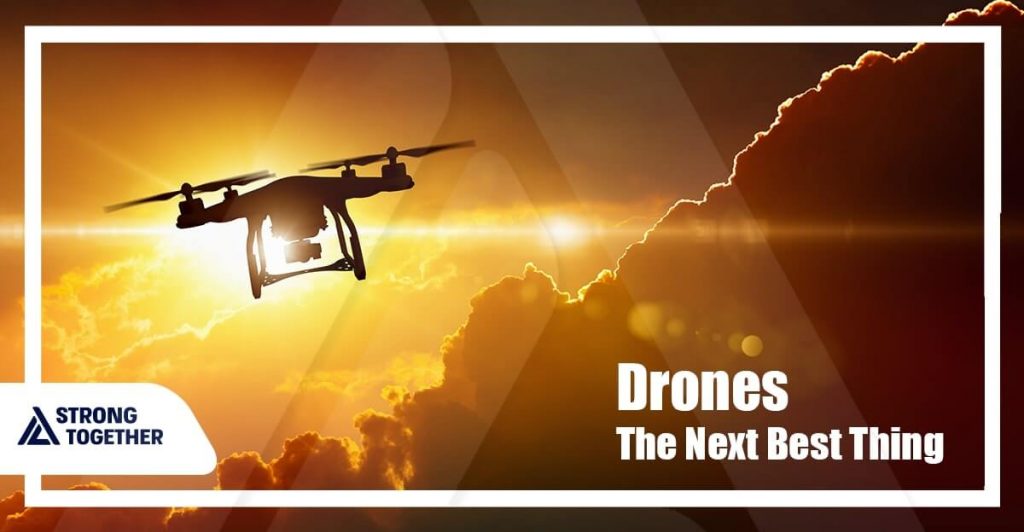
At ICL, we use state-of-the-art industry 4.0 applications such as drones as an effective tool for inspection routines, emergency, and control assignments allowing for improved performance while saving time and money.
Along with the use of GPS, and with their remote-control abilities to communicate possible hazards, drones seize precise data which we use to optimize our operations and prevent malfunctions. Also, drones are used for security patrol alongside the facilities fences, for maintenance checkups of machines and equipment that save time and lower risk to employees (such as boilers internal checks and such
ICL has also developed cutting-edge autonomous trucks that are operating in the Ladenburg site in Germany, which transport materials without the need for any human intervention. This is a great example of an innovative solution for the company’s logistic and operational needs.
Wearable technology such as VR and AR (virtual and augmented reality) are used to improve our ability to receive and access data, which enhances ICL’s operational, maintenance, and safety routines in a variety of fields.
ICL is implementing machine learning models that use Big Data to optimize operational performance and predictive maintenance. The outcome is more efficient process control along with identifying and preventing errors in advance.
Optimized logistics and connected supply chains can adjust and accommodate when new information is presented. If a weather delay ties up a shipment, a connected system can proactively adjust to that reality and modify manufacturing priorities.
Autonomous equipment and vehicles like autonomous cranes and trucks streamline shipping loading and unloading operations of containers from the ships.
Robots move goods around Amazon warehouses and reduce costs and allow better use of floor space for the online retailer.
IT (Information Technology) vs OT (Operational Technology)
The main difference between OT and IT devices is that OT devices control the physical world, while IT systems manage data.
IT and OT are often used in manufacturing and production. OT refers to the hardware and software used to change, monitor, or control physical devices, processes, and events within a factory or production facility like PLCs ( Programmable Logic Controllers) and SCADA (Supervisory Control and Data Acquisition) systems.
Everyday technologies, such as vehicles employ sensors, actuators, and communication so a vehicle can pass real-time position, movement, and condition data back to a collection point for analysis.
Simultaneously instructions and real-time data — such as traffic and weather — can be passed to the vehicle which can help a human driver make better driving decisions, such as finding alternate routes or servicing the vehicle before breakdowns occur.
ICL Innovation is committed to developing innovative products and impactful solutions to meet all life stages and transforming the world for a healthier and sustainable future.
Utilizing our technology, industrial know-how, and advanced R&D capabilities we are leveraging the enormous benefits of Industry 4.0 to add value to our operations to benefit our customers in agriculture, food, and industrial products worldwide.
